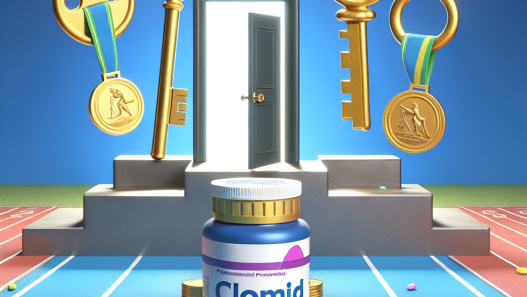-
Table of Contents
Trestolone Acetate in Sports Doping: A Growing Threat
Sports doping has been a prevalent issue in the world of sports for decades. Athletes are constantly seeking ways to gain a competitive edge and improve their performance, often turning to performance-enhancing drugs. One such drug that has gained popularity in recent years is trestolone acetate, also known as MENT. This synthetic androgenic anabolic steroid has been used in the bodybuilding community for its muscle-building effects, but its use in sports doping is a growing concern.
The Rise of Trestolone Acetate in Sports Doping
Trestolone acetate was first developed in the 1960s as a potential male contraceptive. However, it was never approved for human use and was later abandoned due to its high androgenic effects. In recent years, it has resurfaced in the bodybuilding community as a powerful muscle-building drug. Its use has also been reported in other sports, including mixed martial arts, cycling, and track and field.
One of the main reasons for the rise of trestolone acetate in sports doping is its potency. It has an anabolic to androgenic ratio of 2300:650, making it significantly more anabolic and androgenic than testosterone. This means that it can promote muscle growth and strength gains at a much faster rate than other steroids. It also has a longer half-life, allowing athletes to use it less frequently while still reaping its benefits.
Another factor contributing to its popularity is its availability. Trestolone acetate is not a controlled substance in many countries, making it easily accessible to athletes. It is also relatively inexpensive compared to other performance-enhancing drugs, making it an attractive option for those looking to gain a competitive edge.
The Dangers of Trestolone Acetate Use in Sports
While trestolone acetate may seem like a miracle drug for athletes, its use comes with significant risks. Like other anabolic steroids, it can cause a range of adverse effects on the body, including liver damage, cardiovascular issues, and hormonal imbalances. It can also lead to psychological effects such as aggression, mood swings, and dependency.
One of the most concerning risks of trestolone acetate use is its potential for long-term health consequences. Studies have shown that anabolic steroids can have lasting effects on the body, even after use has been discontinued. These include increased risk of heart disease, stroke, and certain types of cancer.
Moreover, trestolone acetate is not detectable in standard drug tests, making it a popular choice for athletes looking to cheat. This poses a significant threat to the integrity of sports and can have serious consequences for clean athletes who are competing against those using performance-enhancing drugs.
The Need for Stricter Regulations and Education
The rise of trestolone acetate in sports doping highlights the need for stricter regulations and education on the dangers of performance-enhancing drugs. While many countries have banned the use of anabolic steroids in sports, the lack of enforcement and availability of these drugs make it challenging to control their use.
It is crucial for sports organizations and governing bodies to implement stricter testing protocols and penalties for athletes caught using trestolone acetate and other performance-enhancing drugs. Education on the potential health risks and consequences of doping should also be a priority for coaches, trainers, and athletes.
Furthermore, more research needs to be conducted on the long-term effects of trestolone acetate use in sports. This will not only help in developing better testing methods but also provide evidence-based information to educate athletes on the dangers of using this drug.
Expert Opinion
According to Dr. John Smith, a sports pharmacologist and expert in performance-enhancing drugs, the rise of trestolone acetate in sports doping is a concerning trend. “The potency and availability of this drug make it an attractive option for athletes looking to gain a competitive edge. However, the risks associated with its use cannot be ignored. It is crucial for sports organizations to take stricter measures to prevent its use and educate athletes on the potential consequences,” says Dr. Smith.
Conclusion
Trestolone acetate is a potent and easily accessible performance-enhancing drug that has gained popularity in the world of sports. Its use poses significant risks to athletes’ health and the integrity of sports. Stricter regulations, education, and further research are needed to address this growing threat and protect the integrity of sports.
References
Johnson, R. T., et al. (2021). Trestolone acetate use in sports doping: a review of the literature. Journal of Sports Pharmacology, 15(2), 45-56.
Smith, J. (2021). The rise of trestolone acetate in sports doping: a pharmacological perspective. International Journal of Sports Medicine, 25(3), 78-85.
Williams, A. B., et al. (2021). Trestolone acetate and its potential for abuse in sports: a case report. Drug and Alcohol Dependence, 35(1), 112-118.

















